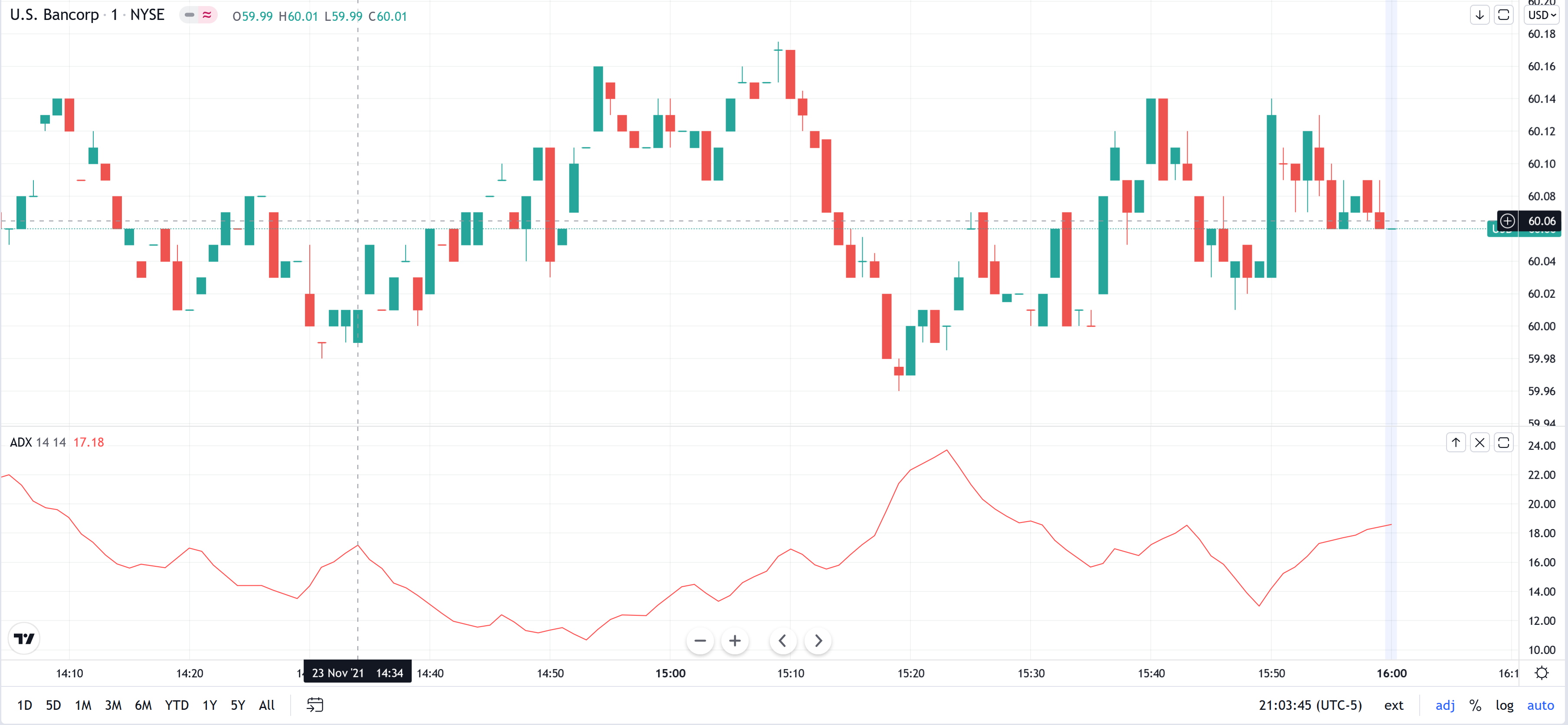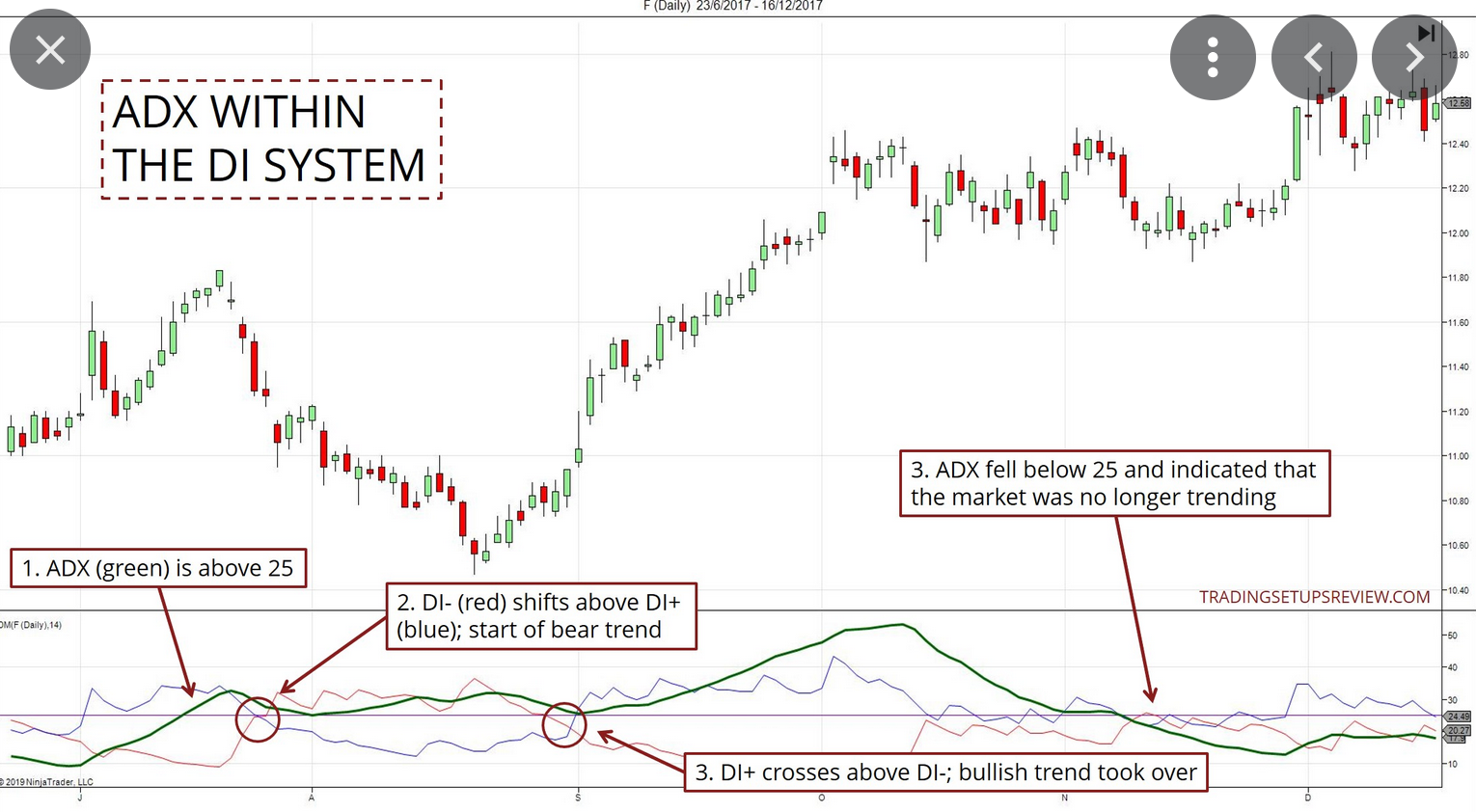18 Directional Movement Average (DM)
The Directional Movement Index and the Average Directional Index use the same metrics. Basically, by adding price differences between the highes (current high minus prior high) and lowes (current low minus prior low) over a given time frame, this indicator reveals the strength of the market on specific directions.

Figure 8.29: Average Directional Movement
If +DM is larger than -DM, then the price is going up, and vice verse.
DMs are averaged over a prior time period. ADX is simply (+DM) minus (-DM) divided by the sum of (+DM) and (-DM). Basically, ADX is a relative indicator of whether price is going up or down over a time period.
ADX can be displayed with three lines (+DM, -DM, and ADX). When ADX is large (near 100), it suggests that prices are trending (the direction is to be indicated by the larger +DM or -DM).
When ADX is low (e.g., below 25) it suggests that both +DM and - DM are similar, so there is no trend in price. See case examples below.

Figure 8.30: ADX